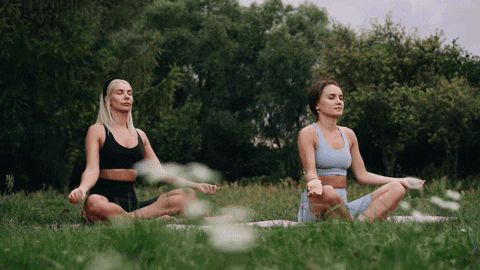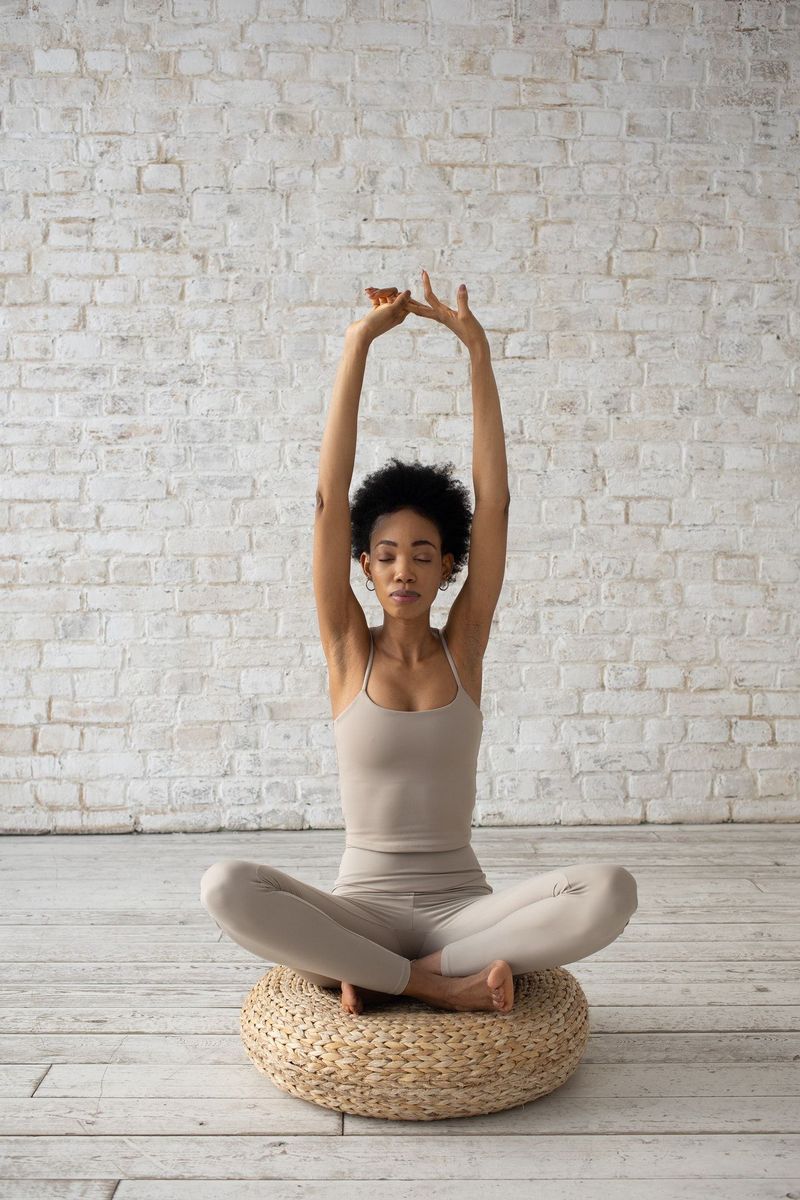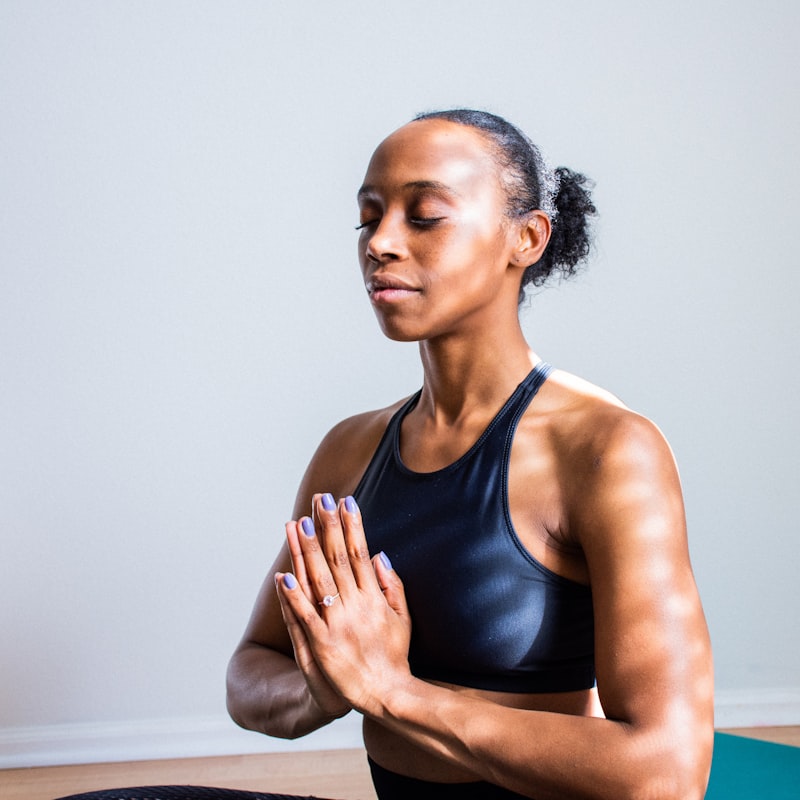Yoga can help you create a foundation for stress management. This foundation is a settled nervous system--a calm, alert mind and body that can experience difficult thoughts and emotions and respond in healthy and appropriate ways. Now, isn't that the kind of response we all wish we could whip out at the drop of a hat (or a stressor)? And let's not forget, we're not just talking about managing work deadlines or traffic jams. We mean navigating the high seas of life: juggling careers, relationships, social commitments, and maybe even a few kids bouncing around. So, wouldn't we all want a secret weapon to help us keep it cool under pressure? Well, start practicing yoga!
What is stress and how does it affect the body?
Stress is a natural response of the body to a perceived threat or demand. It can be triggered by various factors, such as work, relationships, financial problems, or health issues. When you experience stress, your body releases hormones like adrenaline and cortisol, which prepare you for a fight or flight response. This can lead to physical and emotional changes that affect your overall well-being.
Stress can have a negative impact on your body in many ways. It can cause headaches, muscle tension, fatigue, digestive problems, and sleep disturbances. Chronic stress can also weaken your immune system, increase your risk of heart disease, and contribute to mental health issues like anxiety and depression. Moreover, stress can affect your behavior and relationships, making it difficult to focus, communicate effectively, and enjoy life.
What are the benefits of yoga for stress management?
Yoga can help manage stress by promoting relaxation and reducing the physical and emotional symptoms of stress. The practice of yoga involves deep breathing, meditation, and physical postures that can calm the mind and body. Yoga can also help improve your mood, increase your energy levels, and enhance your overall sense of well-being. By practicing yoga regularly, you can develop a greater awareness of your body and mind, and learn to manage stress more effectively.
Yoga is also a good foundation for stress management because it addresses the root causes of stress, rather than just treating the symptoms. Yoga can help you develop a more positive outlook on life, improve your self-esteem, and cultivate a sense of inner peace and calm. By incorporating yoga into your daily routine, you can create a healthy and sustainable way to manage stress and improve your overall quality of life.
Which yoga poses are specifically helpful for stress relief?
Yoga has been shown to be an effective tool for managing stress and anxiety. Certain yoga poses can help to reduce stress levels by calming the mind and relaxing the body. Some of the most effective yoga poses for stress relief include forward folds, such as Uttanasana (Standing Forward Bend), and restorative poses, such as Savasana (Corpse Pose).
Forward folds help to release tension in the neck, shoulders, and back, which are common areas where people hold stress. These poses also help to calm the mind and reduce anxiety. Restorative poses, on the other hand, are designed to promote deep relaxation and rejuvenation. They can be especially helpful for women who lead busy lives and need to take time to recharge.
In addition to forward folds and restorative poses, other yoga poses that are helpful for stress relief include inversions, such as Sirsasana (Headstand), and backbends, such as Ustrasana (Camel Pose). Inversions help to calm the mind and reduce anxiety by increasing blood flow to the brain. Backbends help to open up the chest and improve breathing, which can help to reduce stress levels.
It's important to note that while these yoga poses can be helpful for stress relief, it's also important to practice yoga regularly and incorporate other stress management techniques, such as meditation and deep breathing exercises, into your daily routine. By doing so, you can create a strong foundation for managing stress and living a more balanced life.
How often and for how long should one practice yoga for stress management?
Yoga can be a great tool for stress management, but it's important to practice regularly. Aim to practice yoga at least 2-3 times per week for stress management purposes.
Each yoga session should ideally last for 60-90 minutes. This gives you enough time to warm up, practice a variety of poses, and end with relaxation and meditation. However, if you're short on time, even a 20-30 minute yoga practice can be beneficial for stress relief. You can focus on a few key poses and breathing exercises to help calm your mind and body.
Remember, consistency is key when it comes to using yoga for stress management. Try to establish a regular yoga routine that works for your schedule and stick to it as much as possible.
Can yoga be combined with other forms of exercise for stress management?
Oh, absolutely, honey! Stress management is like a buffet - you get to pick and choose what works best for you. And guess what? Yoga is the perfect side dish to pretty much every main course in this buffet. You can effortlessly pair it with other forms of exercise for a well-rounded stress-busting routine.
Picture this: yoga is like the calm, zen friend who always knows the right thing to say when you’re stressed. But sometimes, you need that energetic, adrenaline-pumping friend who gets you moving and shaking off the worries – that’s where other exercises come in. When you combine the two, you get the perfect balance.
But, you might be wondering, "Why should I mix yoga with other exercises?" I'm glad you asked. Check this out:
- Enhanced Physical Endurance: While yoga is great for flexibility and balance, cardio and weightlifting can improve your physical endurance and strength. It's the perfect fitness cocktail!
- Better Mental Stamina: Yoga can help you build mental resilience, but so can high-intensity exercises. Ever heard of runner's high? It's a thing, trust me!
- Diversification: Mixing up your exercise routine keeps things fresh and exciting. No one likes a boring workout routine, right?
So, ladies, let’s not put yoga in a corner. It is not an either-or situation. The beauty of yoga is that it complements your other workouts, not competes with them. We want synergy, not rivalry.
Now, I can sense that question bubbling up in your mind, "Alright, but how do I combine them?". No worries, I've got you covered!
- Alternate Days: One day yoga, next day cardio. Easy peasy, right?
- Yoga as a Warm-Up or Cool Down: Yoga postures can be the perfect way to warm up your body before a high-intensity workout, or cool down post-workout. It's like the appetizer and dessert to your main course.
- Blend It: Mix in yoga postures throughout your workout. A dash of yoga here, a sprinkle of cardio there. Voila! You've got yourself a workout stew.
The key is to listen to your body. Some days might call for a calming yoga session, while other days might scream for an adrenaline-pumping run. The point is, there's no one-size-fits-all when it comes to stress management. So, go ahead, mix and match, and find your perfect stress-busting concoction!







